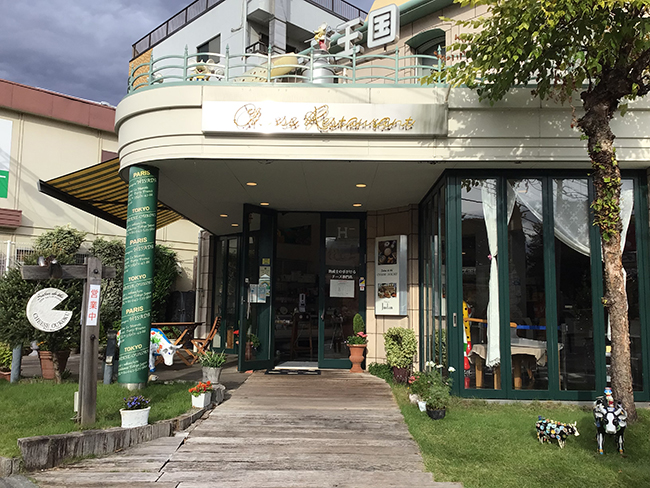Cheese Fundamentals & Aging from Japan’s Cheese Kingdom
Feb 10,2022
Cheese Fundamentals & Aging from Japan’s Cheese Kingdom
Feb 10,2022
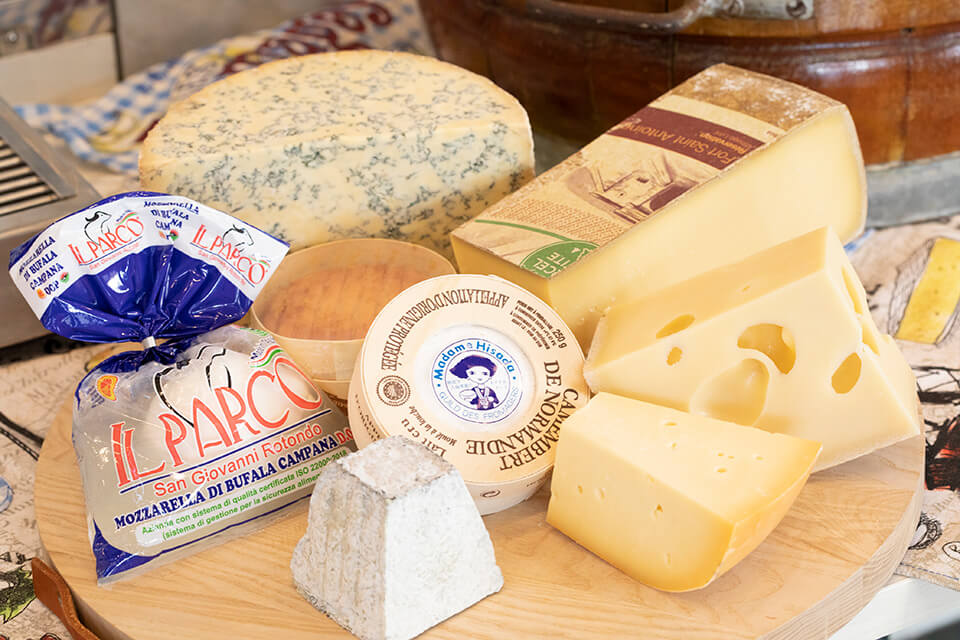

Cheese is one of the most commonly eaten household foods. But in Japan, specific knowledge about this fermented food originally from the West is not as widespread as it is for wine.
With people spending more time at home these days, we asked Hisada Yumiko from Cheese Oukoku [Cheese Kingdom], Japan’s leading cheese specialty store, to give a lesson for people who want to enjoy cheese at home on the basics for a more delicious cheese experience.
Cheese Oukoku has been a pioneer in the Japanese cheese specialty store industry since its opening in 1985. In addition to its flagship store, Salon de Thé Cheese Oukoku, located in Tachikawa, Tokyo, it currently operates 16 branches nationwide (as of February 25, 2022). Fromagerie Hisada, a sister brand, is also a cheese specialty store with its main shop in Paris and six branches in Japan. Cheese lovers flock in large numbers to both chains.
The founders of the group were Hisada Toshio and Hisada Sanae. Their eldest son, Ken, and his wife, Yumiko, now run the business.
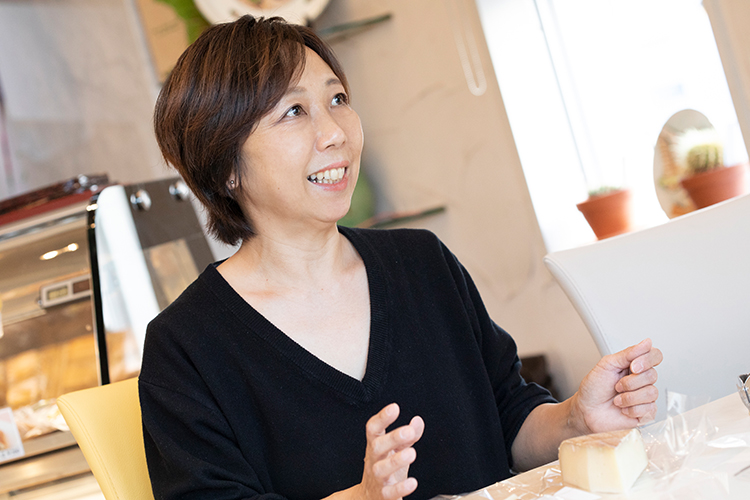
“Hisada Sanae moved to France at the age of 48 to study cheese, and later she opened a cheese specialty store in Paris equipped with a cheese ripening cellar. After years of dedication, she was recognized for her achievements as a fromage affineur [cheese ripener] with the title of Maître Fromager [Master Cheesemaker], the highest title bestowed by the Guilde Internationale des Fromagers – Confrérie de Saint-Uguzon, an association of cheese professionals. She was the first Japanese person to be awarded this title.”
A fromage affineur is an artisan with specialized knowledge and skills unique to the world of cheese who is responsible for ripening cheese purchased from producers to its optimal condition before delivering it to consumers. Yumiko also has an affineur title from the Guilde, and the Cheese Oukoku flagship store has a dedicated cheese ripening cellar in its basement.
“Fruits vary in taste depending on the region and producer, and how ripe they are also affects their flavor. The same is true with cheese. To take one example, there are many producers of Camembert cheese from Normandy in France. To carefully screen the producers and products we buy from, we visit the producers ourselves to confirm the manufacturing process, quality, and whether the cows used for milk production are raised in a healthy environment. We then give our own ripening specifications to ensure the cheeses are transported in optimal condition, after which the cheeses are delivered to our customers.”
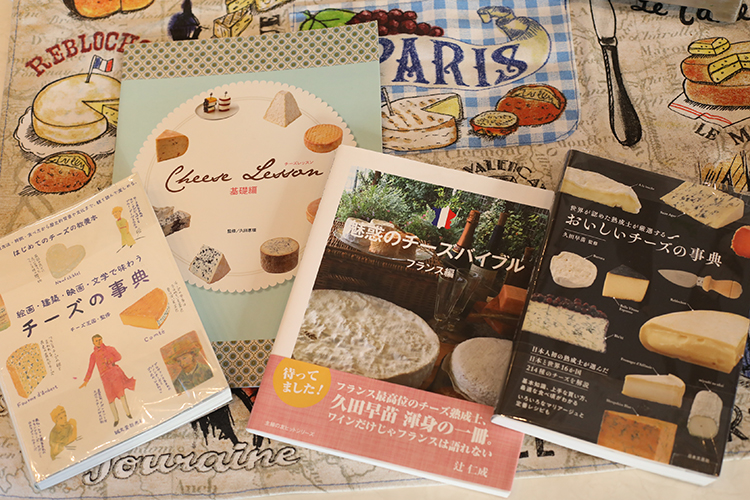
The Hisada Group has been involved in the publication of many books on cheese
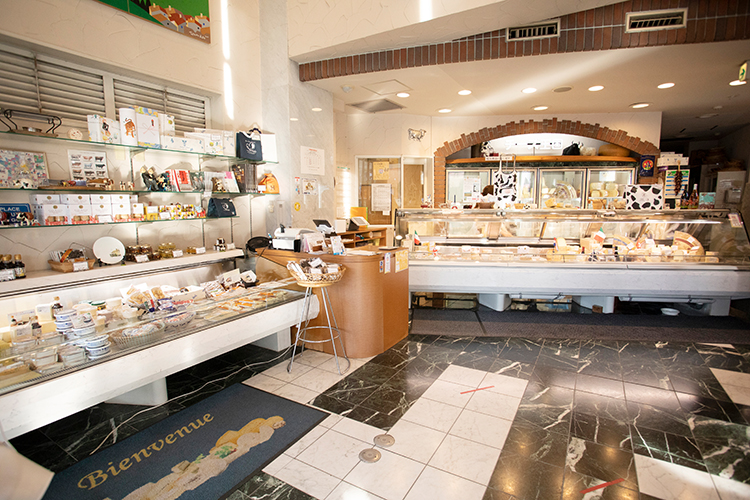
Cheese Oukoku is dedicated to delivering the best cheeses in the best condition. Let’s learn about the main types of cheese while looking at actual examples displayed in the store’s showcase.
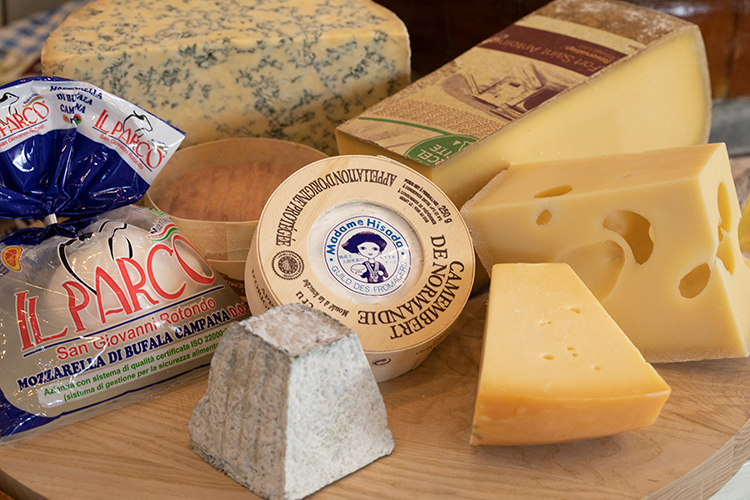
Cheeses are generally divided into seven types. Yumiko selected some of the most common examples for each type.
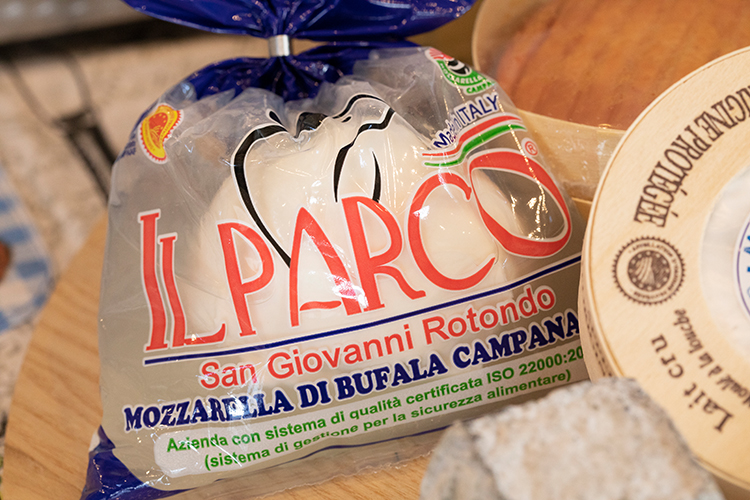
Fresh cheeses are made without ripening and are eaten immediately after production. This type is characterized by mild, refreshing flavors and is also known as unaged cheese. The photo shows Mozzarella di Bufala DOP. (Italy). Fromage Blanc (France / Japan) and Ricotta (Italy) also belong to this type.
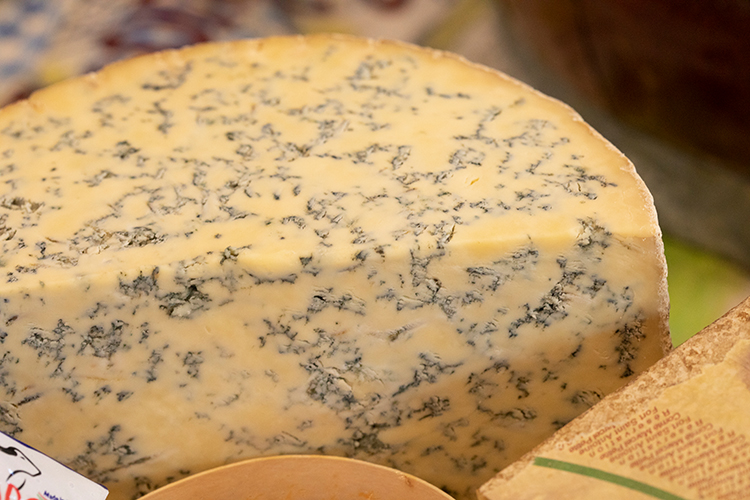
This type of cheese has the characteristic flavor and saltiness of Penicillium roqueforti mold. As the cheese ages, the flavor becomes sharper. The photo shows Blue Stilton (England). Other well-known blue-veined cheeses include Roquefort AOC (France) and Gorgonzola DOP. (Italy).
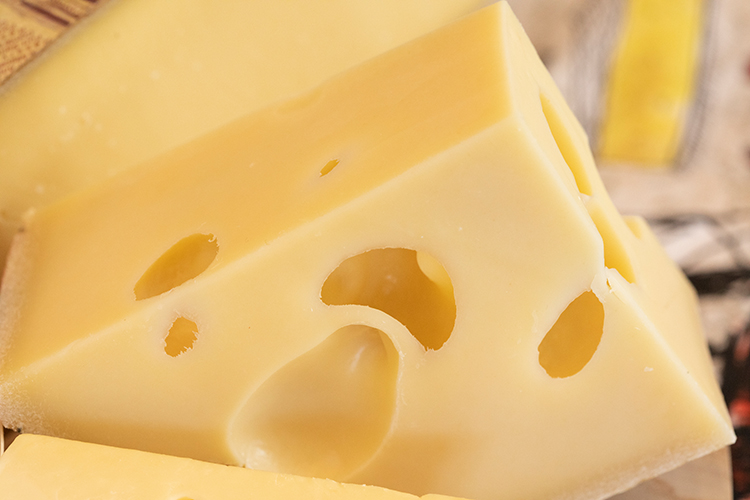
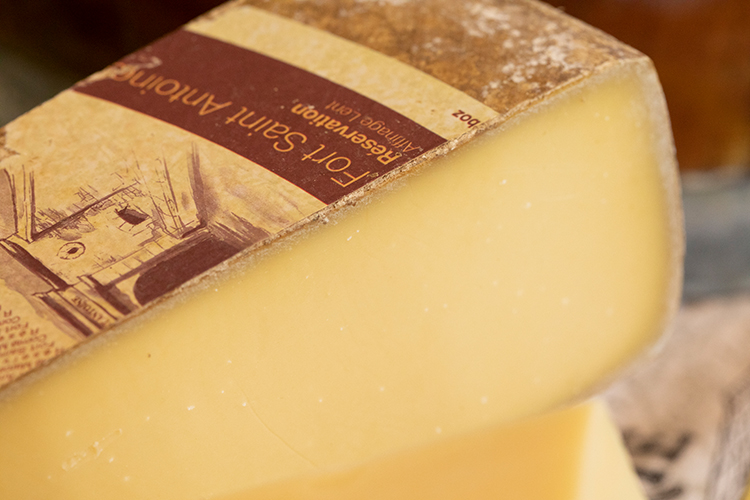
Hard cheeses are perhaps the most familiar to Japanese, who use them frequently in cooking. These cheeses are suitable for long-term ripening, and when aged properly, their umami flavor intensifies, making them ideal for grating or grinding into powder and being used as seasonings. The photo shows Comté AOC Extra and Emmental de Savoie (both from France). Italian Parmigiano-Reggiano DOP is also a well-known hard cheese.
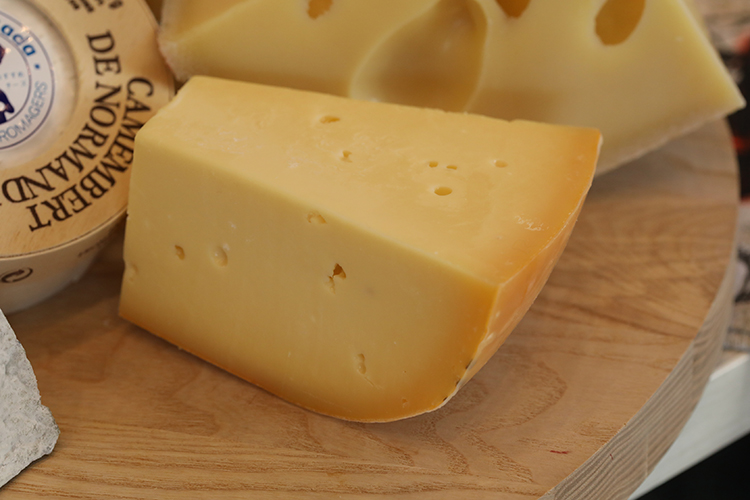
Semi-hard cheeses melt nicely when heated, have a pleasant texture, and are frequently used in cooking. The photo shows Gouda de Mai (Netherlands). The French Raclette and Reblochon AOC cheeses are also semi-hard types.
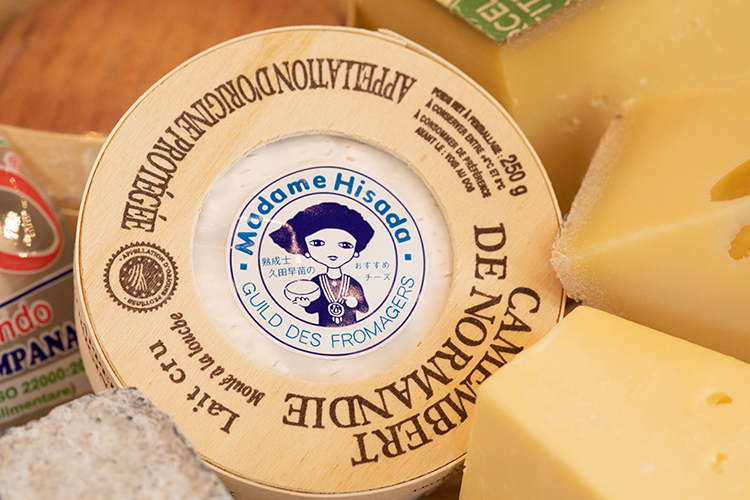
White-rind cheeses are ripened by growing white mold (Penicillium camemberti) on the surface and are characterized by a soft interior and a white rind with a mushroom-like aroma. White-rind cheeses range from relatively mild, easy-to-eat varieties to very pronounced tastes. They are an excellent introduction into hard-core cheeses. French Brie is a classic white-rind cheese. The photo shows Camembert de Normandie AOC (France).
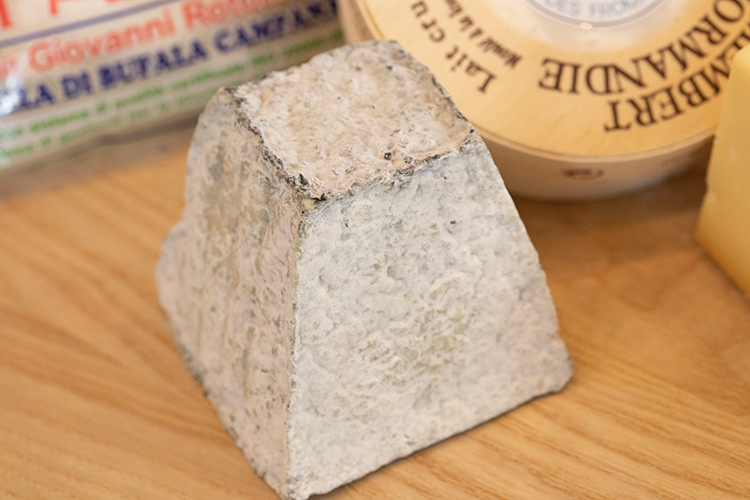
Chèvre cheese refers to all cheeses made with goat milk. These cheeses have very distinctive flavors, and their wide range of aging stages make them cheeses for connoisseurs. Pictured is Valençay AOC (France).
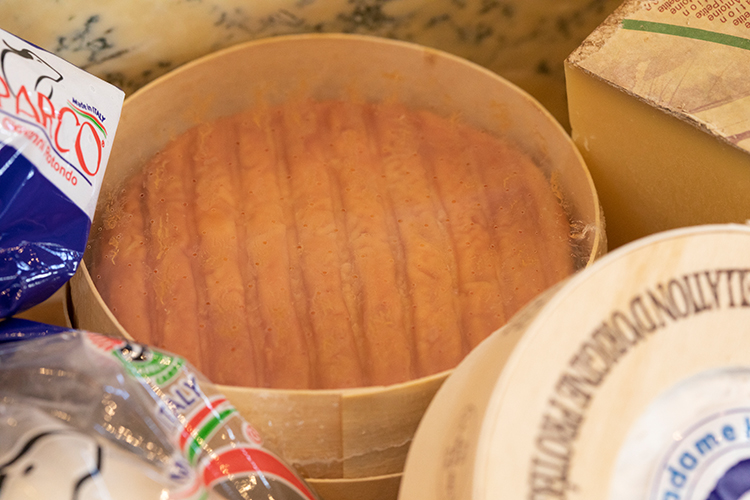
Washed-rind cheeses are made by treating the surface of the cheese with salted water or alcohol, which encourages fermentation by microorganisms different from other cheese types, resulting in distinctive aromas. The photo shows Époisses AOC (France). Other examples include Munster AOC (France) and Taleggio DOP (Italy), which are also known for their robust aromas.
Cheeses are usually divided into seven types. Recently, however, some people have been using eight types, including brebis cheeses made from sheep milk in a separate category.
Among the seven types of cheese, chèvre cheese is Hisada’s favorite type.
“Chèvre cheese shows clear changes with aging, and as it ripens, you get all kinds of different tastes. For a fromage affineur, chèvre cheeses are the most fun to work with. One cheese I would like more people to try is Clacbitou from Burgundy, France. Hisada Sanae instantly fell in love with this cheese the first time she tried it after moving to France, and it convinced her to become a fromage affineur.”
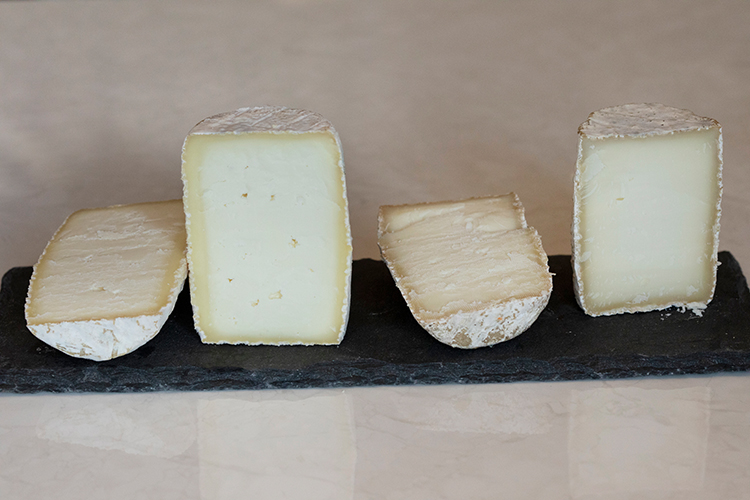
Clacbitou aged for a month and a half on the left and for four months on the right
With Clacbitou, a chèvre cheese, you can clearly see the differences between cheese aged for a month and a half and cheese aged for four months in a ripening cellar. The four-month-old cheese is a size smaller due to moisture evaporating, which concentrates the flavor throughout the cheese.
On tasting the two, the six-week-old Clacbitou tastes fresher and has a softer texture with a tangy acidity. The four-month-old cheese has a firmer texture, a longer rich aftertaste, and a more prominent umami and saltiness. Both have the deep, distinctive flavor of chèvre cheese that makes you want to reach for a glass of wine.
“When ripening cheese, longer doesn’t necessarily mean better, and it doesn’t mean you simply store it away. The job of a fromage affineur is to determine the condition of the cheese as it changes day by day and manage it by treating the cheese as necessary to guide the cheese-ripening in the right direction. The best way to enjoy cheese is to ripen it to your preferred taste. Cheese aged for a shorter time may have a stronger acidity, but this can be tamed by having it with honey or some other condiment.”
“For those who want to start enjoying cheese in earnest, here’s something you should know,” says Hisada. The taste of cheese varies greatly depending on the type of milk used.
“Customers often ask us for Camembert, for example. But many seem to have a vague image that Camembert encompasses all white-rind cheeses. If this happens, I’ll explain that there are differences in taste even among white-rind cheeses and then help them choose.”
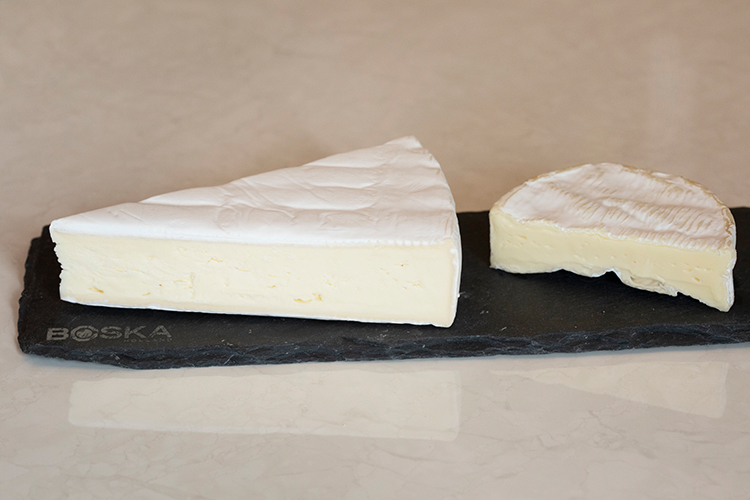
On the left is Brie, and on the right is Camembert de Normandie
For example, when comparing Brie and Camembert de Normandie AOC, two white-rind French cheeses, the taste difference comes from whether the milk was pasteurized or unpasteurized.
Brie looks very white and has a well-defined taste. Its aroma is not so strong. Camembert de Normandie AOC, on the other hand, has an unmistakable aroma, and its taste is also complex. Despite both being white-rind cheeses, the taste impressions are completely different.
“The Brie we carry at Cheese Oukoku is made with pasteurized milk, while the Camembert de Normandie AOC is made with unpasteurized milk. The differences in milk clearly carry over into taste differences, and not just for white-rind cheeses. For customers looking for well-defined, clean tastes, I recommend pasteurized cheeses. But for people looking for a cheese to pair with wine, I suggest they try eating an unpasteurized cheese.”
While wine and cheese pairings are the gold standard, Yumiko recommends, of all things, pairing cheese with saké.
“Cheese goes great with saké. I actually prefer saké over wine, so I normally have saké with cheese. Dry saké, especially ones produced in Toyama and Ishikawa in the Hokuriku region, tastes amazing when paired with cheese.”
There are literally countless pairings of saké and cheese, but Yumiko’s favorite is a hard Swiss cheese called Cironé made with unpasteurized milk.
At her bidding, we tried Cironé pairings with several types of saké, including dry hot saké and sweet kijoshu saké, and all tasted wonderful. Why do they complement each other so well?
“When you eat Cironé, you’ll notice it has a slightly crunchy texture. That’s due to amino acids, which are umami components, that have crystallized during the ripening process. The more of these amino acid crystals there are, the more delicious the cheese is said to be. The stronger the umami a cheese has, the better it pairs with saké. Saké also goes well with Italian Parmigiano Reggiano DOP.”
The world of cheese offers endless enjoyment the more you learn about it. We look forward to discovering more about delicious cheeses and cheese culture.
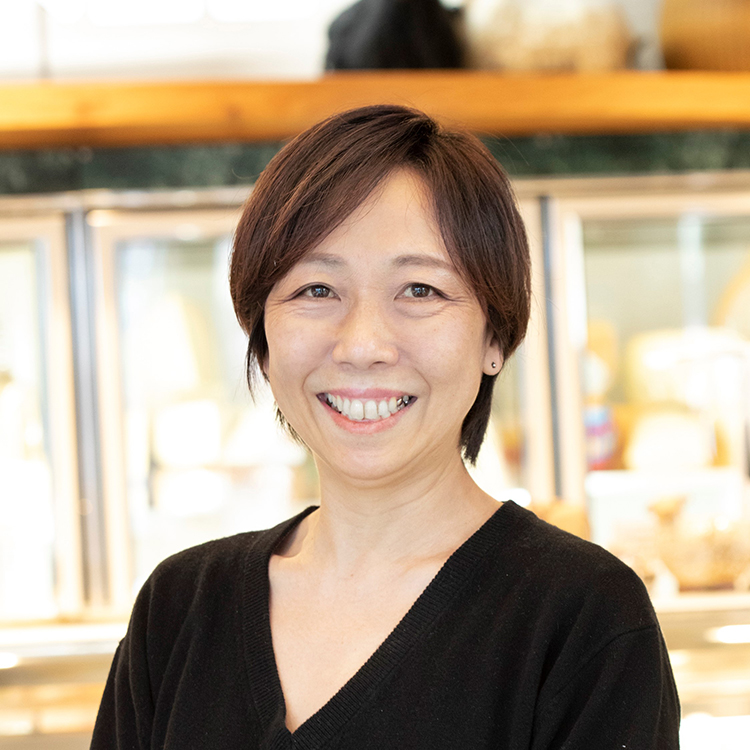
Yumiko is the sales manager at Hisada Co., Ltd., which operates Cheese Oukoku and Fromagerie Hisada. She has a Garde et Jure title as a fromage affineur.
